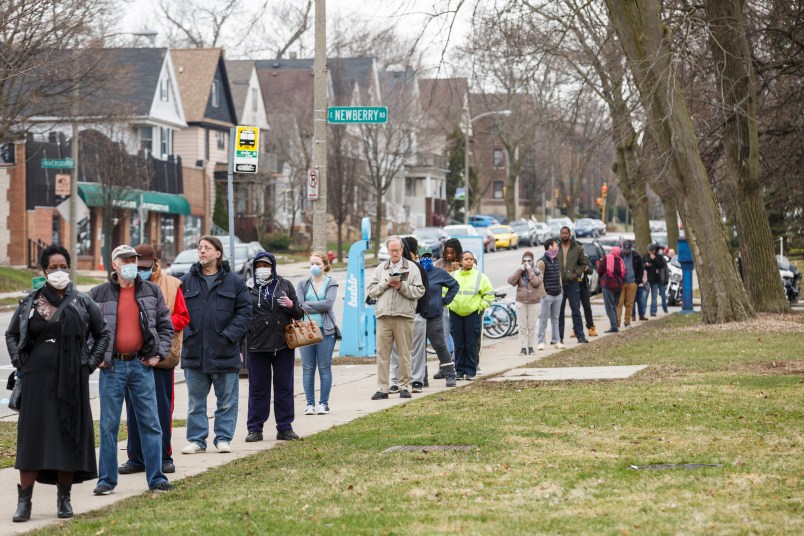The Wisconsin Department of Health Services announced Thursday that it has upped its number of contact tracers to interview people infected with coronavirus about who they may have interacted with — connections that are likely to be more numerous after thousands of voters flocked to the polls on Tuesday.
The department has added over 120 contact tracers to its ranks, and Gov. Tony Evers (D-WI) is pushing the legislature to approve $17 million for local public health agencies and 64 additional DHS staff members.
“Contact tracing is a critical tool in our ability to effectively manage COVID-19 now and moving forward,” said Health Services Secretary-designee Andrea Palm in a statement. “We will continue this important work to ensure that every case is followed up on, contacted, and anyone who may have been exposed notified.”
CDC Director Robert Redfield this week advocated for “very aggressive” contact tracing nationwide to flatten the curve of the pandemic.
The Wisconsin DHS expects to start seeing any cases emerging from election day next week, but won’t get a full picture for weeks after that, while voters and poll workers may develop symptoms, get tested, get test results back and be interviewed by the contact tracers. The additional interviewers will help the state’s surveillance epidemiologists measure the effect of the election on transmission in the state.
Leana Wen, an emergency physician and visiting professor of health policy and management at George Washington University, said it made “no sense to have people gather in large numbers on Tuesday,” and predicted that Wisconsin’s DHS would uncover some grim findings.
“We’d expect an increase in the number of new infections in the 1–2 weeks following the exposure, then a week or two after that, a rise in hospitalizations and, tragically, likely more deaths,” she told TPM. “This should be a cautionary tale for other states: now is the time to heed public health guidance and practice physical distancing to reduce the spread of the COVID-19 and help save lives.”
State-level Democrats tried both legislatively and legally to get the election date pushed back, but were stymied by Republicans.
Governor Tony Evers (D) issued a last-minute executive order to postpone the primary until June, which was immediately challenged by Republican leadership.
That same court, with its conservative majority, decided against Evers on Monday and kept the in-person voting on Tuesday as planned. The same night, the U.S. Supreme Court also curtailed the absentee voting window, ruling that ballots must be postmarked by Tuesday to count.
A critical state Supreme Court seat was decided Tuesday as well as the Democratic primary. Low turnout, as is almost guaranteed in a primary during the pandemic, favors the incumbent: in this case, Justice Dan Kelly, a Republican.
But in all, it is still unclear what effect all of these suppressive decisions had on election turnout: results will be announced this coming Monday.
House Speaker Robin Vos (R), an integral player in quashing Evers’ attempts to move the election date, assured voters from a Burlington, Wisconsin polling place that it was “incredibly safe to go out” and vote.
“Actually, there’s less exposure here than you would get if you went to the grocery store or you went to Walmart or you did any of the many things we have to do to live in the state of Wisconsin,” he said, clad in head-to-toe protective equipment.



